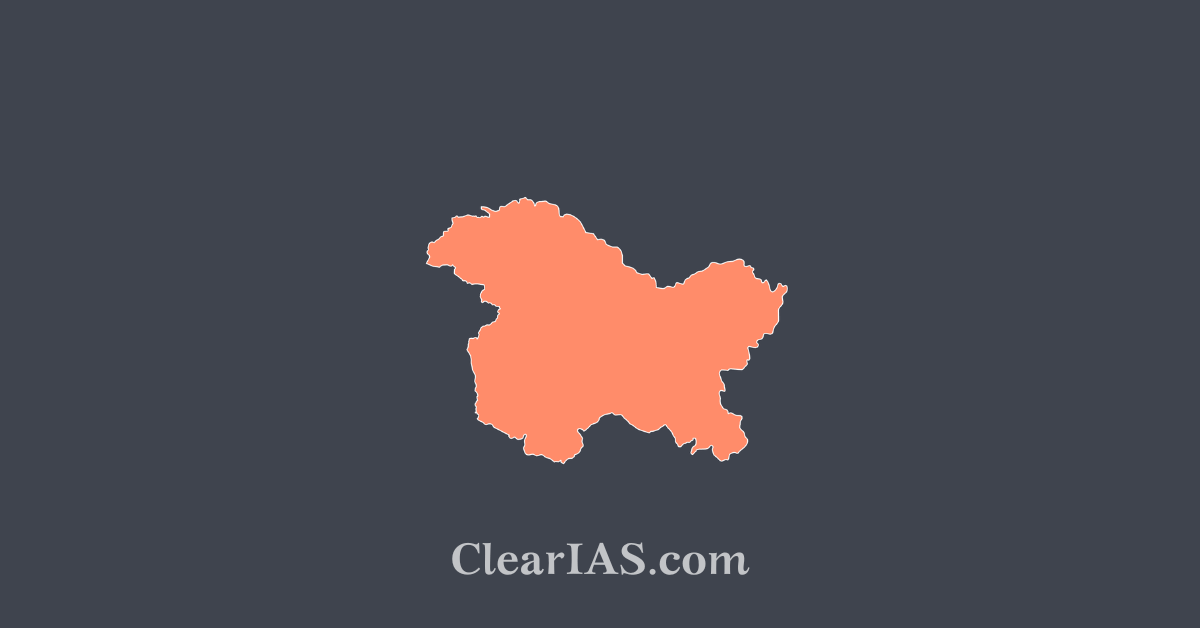
The restoration of statehood for Jammu and Kashmir (J&K) has been a significant political topic in India since the region’s reorganization in August 2019. Read here to learn more.
The reorganization of the Jammu and Kashmir region redefined the former state into two Union Territories-Jammu & Kashmir and Ladakh-under the Jammu and Kashmir Reorganization Act, 2019.
This decision followed the abrogation of Article 370, which granted the region special status.
The newly elected regime of Jammu & Kashmir UT is making it a priority in the Assembly to demand for restoration of statehood.
The reasonably high turnout in the Assembly elections had demonstrated the faith reposed by the people of J&K in democratic institutions, and their desire for a return to popular rule.
Restoration of statehood for Jammu & Kashmir
- Government’s Commitment:
- The Indian government has stated on multiple occasions that statehood for J&K will be restored when the conditions allow, specifically when security and stability improve.
- Home Minister Amit Shah reiterated this in Parliament and public addresses, emphasizing that development, normalization of political processes, and improved security remain priorities before statehood can be reinstated.
- Political and Public Sentiment:
- Many political parties, including the National Conference (NC), People’s Democratic Party (PDP), and Indian National Congress (INC), along with regional stakeholders, have urged for a swift restoration of statehood.
- They argue that full statehood, rather than Union Territory status, would empower local governance and respect the unique cultural and political identity of the region.
- Political groups also express concerns that prolonged Union Territory status limits self-governance and decision-making, which they argue could affect public confidence and contribute to unrest.
- Legal and Security Considerations:
- The government has cited security issues as a central concern, noting that J&K has a long history of insurgency and border conflicts.
- Although the security situation has reportedly improved, sporadic incidents continue, especially along the border, prompting authorities to remain cautious about restoring full state autonomy.
- Additionally, the Delimitation Commission set up in J&K to redraw constituencies based on the latest census data completed its work in 2022. This was a step seen as necessary for eventual elections and is expected to support the groundwork for a return to statehood.
- Prospects for Development:
- The Union Territory status has allowed for direct central government investment, with some seeing this as a beneficial shift for economic growth and infrastructure development.
- However, proponents of statehood argue that sustainable development would be better driven under a state government structure that aligns more closely with regional needs and local governance.
Current status in Jammu & Kashmir
The recent Assembly elections in Jammu and Kashmir (J&K) have underscored the commitment of its residents to democratic processes and the desire for a representative government, despite the complex political landscape.
- High voter turnout indicates a strong public mandate for both governance and stability in the region, reflecting a growing inclination towards a return to statehood and local governance.
- The restoration of statehood is seen as a priority for J&K’s population, as it would restore autonomy and enhance the local administration’s capacity to address specific regional issues.
- While there is continued discontent over the revocation of J&K’s special status in 2019, statehood restoration is distinct from this and aligns with a broader commitment to strengthening democratic institutions.
- Furthermore, the security situation remains challenging, with an uptick in militant attacks primarily affecting civilians and non-local workers.
- This escalation appears aimed at instilling fear and potentially provoking reactive security measures, emphasizing the need for stability through responsible governance.
Notably, the ruling Bharatiya Janata Party (BJP) at the central level has a significant role in influencing the timeline for statehood restoration.
- Despite the BJP’s limited local representation in J&K, the demand for statehood transcends party lines, marking it as a matter of regional and national importance.
- Local and national stakeholders argue that further delaying statehood undermines the elected regime’s effectiveness and its potential to address the population’s needs more thoroughly, thereby reinforcing the urgency of converting J&K’s Union Territory status back to full statehood to promote long-term peace and prosperity.
Potential Path Forward
The process for restoring statehood is likely to hinge on the completion of assembly elections, improving security conditions, and the economic integration of J&K.
Although a definitive timeline hasn’t been specified, ongoing developments in infrastructure, local governance, and security are paving the way toward eventual statehood.
The focus remains on balancing security and autonomy, ensuring stability while addressing the democratic aspirations of J&K’s people.
Conclusion
Restoring statehood for J&K is a complex decision influenced by factors such as regional security, political aspirations, and economic development, and will continue to evolve with national and local developments in the region.
Frequently Asked Questions (FAQs)
Q. When did Jammu & Kashmir become a state?
Ans: On January 26, 1950, when India became a Republic, Article 370 of the Constitution of India conferred a special status on the State of Jammu and Kashmir. The Regent, as Head of the State, issued a Proclamation on May 1, 1951, directing the formation of a Constituent Assembly of elected members.
Q. When did the Jammu & Kashmir princely state form?
Ans: The princely state was created after the First Anglo-Sikh War, when the East India Company, which had annexed the Kashmir Valley, from the Sikhs as war indemnity, then sold it to the Raja of Jammu, Gulab Singh, for rupees 75 lakhs.
Related articles:
-Article by Swathi Satish






Leave a Reply